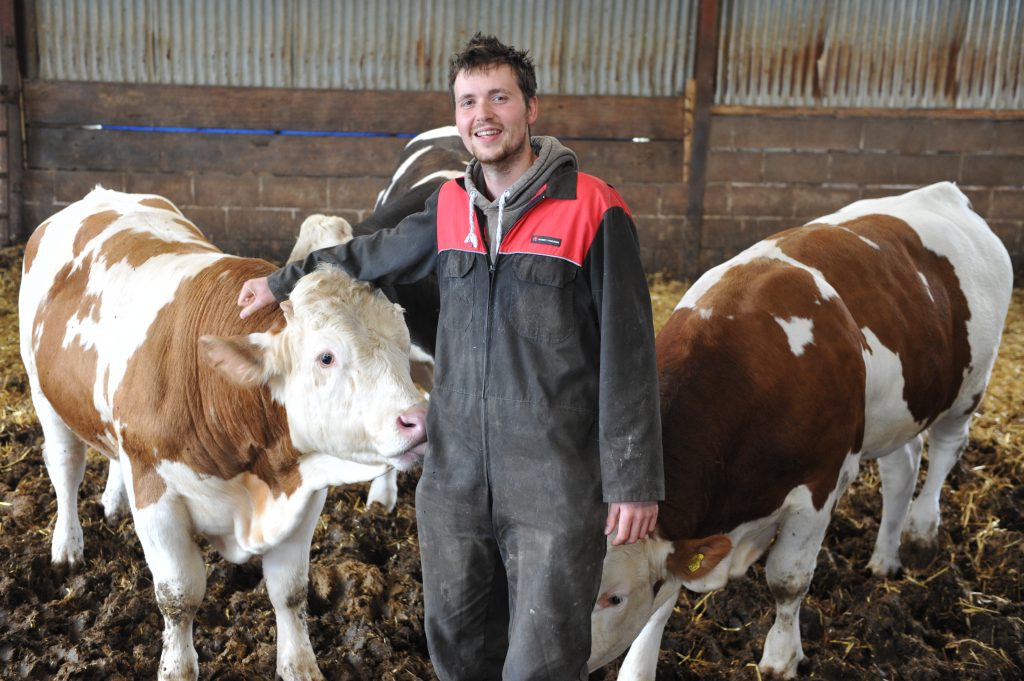Father and son Martin and Duncan Morris are improving finishing times in up to 200 bulls by supplementing them with Biosprint live yeast.
The Morris’ were producing milk on the 160-acre upland farm before switching to a beef system six years ago.
They source dairy-bred beef animals aged from two to four weeks from dairy farms. “We have five or six farms that we buy from, farms that we know have good colostrum management protocols,’’ says Duncan. “The calves are from big stocky cows like Fleckviehs and Monbeliardes.’’
He buys around 125 calves in March and another 80 in September, to spread the workload through the year. When calves arrive they are bucket reared on milk in groups of 10 and also offered corn. Weaning is from eight weeks old, depending on calf size and the volume of corn consumed. At this stage Rearer 18, a pellet containing Biosprint live yeast, is introduced together with barley.
Barley, including homegrown grain from a 40-acre crop, is mill and mixed on-farm with Rearer 18 containing Biosprint. This is fed from weaning to finishing, initially at a ratio of 50:50. “We gradually reduce the volume of Rearer 18 to bring down the protein level in the diet, to get the bulls fatter,’’ says Duncan.
The Morris’ had been feeding rolled barley only and introduced Biosprint to increase intakes and finish bulls earlier.
“I read about the benefits of feeding live yeast and particularly liked the reports of the consistency of Biosprint so decided to give it a go,’’ says Duncan.
Since feeding Biosprint and making other changes, such as increasing the pellet protein content from 14% to 18%, bulls are finishing two months earlier, at 12 months at an average of 300kg deadweight.
“The younger the animal the better the feed conversion efficiency so the sooner we can get them off farm the better,’’ says Duncan, who sells to ABP. “
A bigger animal will consume a lot more feed but will convert less of it into growth.’’ Not only are animals growing well but they are healthy too, he adds.
“Their coats are silkier and we no longer get issues with bloat. Their tummies are happier so they are happier and because of that they eat more and grow better.’’

